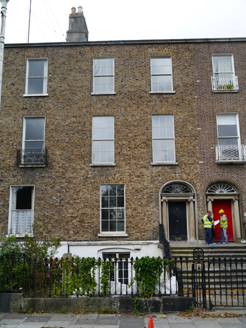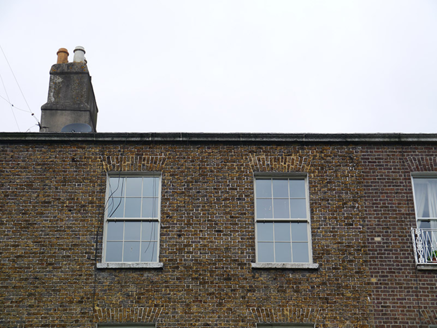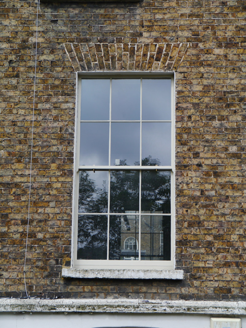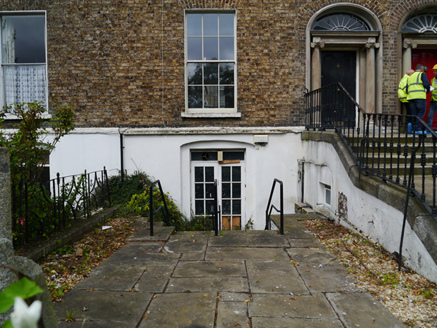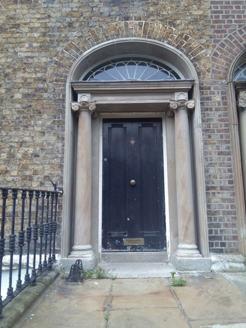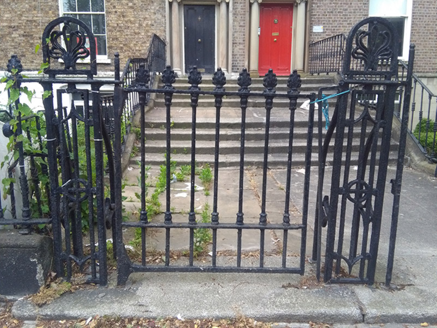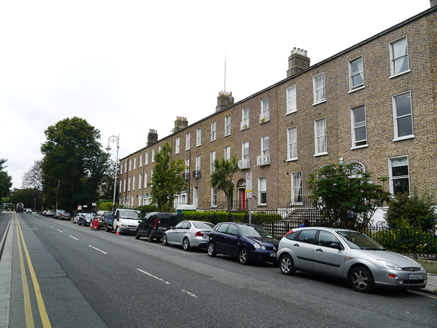Survey Data
Reg No
50100683
Rating
Regional
Categories of Special Interest
Architectural, Artistic
Original Use
House
In Use As
Office
Date
1795 - 1835
Coordinates
317004, 233101
Date Recorded
03/08/2016
Date Updated
--/--/--
Description
Attached two-bay three-storey former house over raised basement, built c. 1815 as one of twelve (Nos. 4-15) within longer row of similar houses, with three-storey return to north end of rear. Now in office use. M-profile roof, hipped to north end, with brick parapet having moulded granite coping. Shouldered rendered chimneystacks to south party wall with clay pots. Concealed rainwater goods. Flemish bond buff brick walling on painted masonry plinth course over rendered basement walling; rendered to rear and to return. Square-headed window openings with painted rendered reveals and painted granite sills; rendered surround to basement opening, set in segmental-headed recess. Replacement six-over-six pane timber sliding sash windows with convex horns; recent timber and glazed French doors to basement, and diminutive fixed timber window beneath entrance platform; rear elevation has six-over-six pane windows, with round-headed window to north bay. Elliptical-headed doorway with stone doorcase comprising moulded reveals, pro-style columns with Scamozzian capitals, entablature with laurel wreaths to panelled frieze, peacock's tail fanlight and bolection-moulded twin-panel timber door with beaded muntin and brass furniture. Shared sandstone-paved entrance platform with cast-iron boot-scrape and two stages of four and four bull-nosed steps with single granite step to street. Steps and street-frontage bounded by decorative cast-iron railings on moulded granite plinth, with matching pedestrian gates having decorative round-headed cast-iron openwork piers. Yard to rear of plot.
Appraisal
No. 10 Herbert Place forms part of a long, cohesive late Georgian terrace, set back from the Grand Canal above exposed basements. The historic form and architectural character of the row are largely well retained. Despite some loss of historic fabric, No. 10 retains original proportions, decorative ironwork and a good stone doorcase, complete with Scamozzian capitals and a petal fanlight, which diverges from the Doric order of much of the row. Forming part of a unified group lining the west bank of the Grand Canal, the terrace enhances this historic streetscape and contributes to the wider Georgian core of south Dublin. Originally built as a southward continuation of Warrington Place, this stretch of the street was renamed following the accession of Sidney Herbert to his father's estates in 1827.

